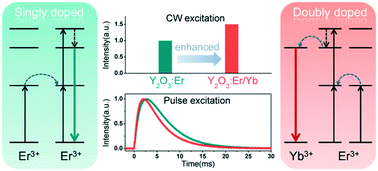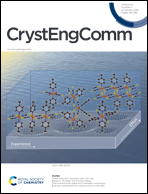Enhancing IR to NIR upconversion emission in Er3+-sensitized phosphors by adding Yb3+ as a highly efficient NIR-emitting center for photovoltaic applications
Abstract
Near-infrared (NIR) to visible upconversion (UC) luminescence in activator Er3+ and sensitizer Yb3+ codoped systems has been extensively studied. In this work, we report the results of Er3+-sensitized Yb3+ NIR UC emission at ∼1000 nm originating from 2F5/2 → 2F7/2 transition under infrared (IR) excitation at ∼1500 nm responsible for Er3+ 4I15/2 → 4I13/2 transition absorption. The IR to NIR UC is a desirable strategy to increase solar light utilization by reducing the spectral mismatch between the solar spectrum and crystalline silicon (c-Si) solar cells. Er3+ singly doped phosphors are mostly used for realizing the IR to NIR UC emission derived from Er3+ 4I11/2 → 4I15/2 transition centered also at ∼1000 nm. The efficiency of this transition, however, is limited by multiphonon relaxation and radiative transition to the 4I13/2 state. Here, Yb3+ ions are codoped in Y2O3:Er3+, and NIR UC emission with the intensity enhanced 1.5 times is achieved due to efficient energy transfer from Er3+ to Yb3+ and highly efficient Yb3+ emission. The influence of the dopants' concentrations on UC dynamics is studied. The optimal concentration under IR excitation is 5% Er3+ and 1% Yb3+. Our results indicate that introducing Yb3+ ions in Er3+ singly doped phosphors may notably improve the IR to NIR UC performance.



 Please wait while we load your content...
Please wait while we load your content...